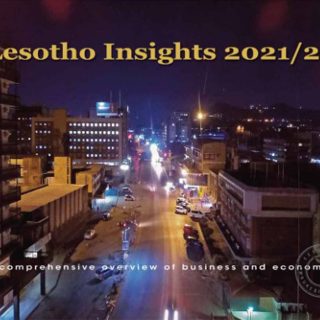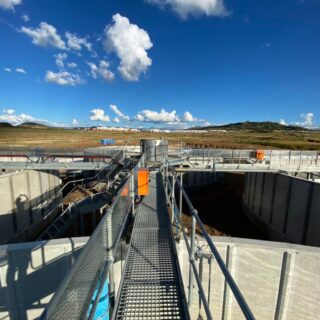Opening up small-scale mining: A gateway to local participation and beneficiation

Bereng Mpaki
The Kingdom of Lesotho is endowed with plenty of natural resources and minerals, which if explored to full potential, could buttress the country’s job creation needs and generate the much-needed foreign exchange that could completely change Lesotho’s GDP graph. From mining (especially diamonds and other precious stones), fresh water, clean environment, archaeological richness, the sky is the limit.
LESOTHO is reviving artisanal and small- scale mining (ASM) in to increase local participation in a sector dominated by foreign players.
Licensed diamond digging by local diggers was first introduced in the country in 1961 but was barred in 2004 due to rising tensions between local diggers and large, foreign-owned mining companies.
But through amending the Mines and Minerals Act of 2005, which is currently before parliament, the government is re-introducing artisanal and small- scale mining to empower locals to claim a stake in the mining industry,.
The Commissioner of Mines from the Ministry of Mining, Pheello Tjatja, says artisanal mining will not only increase participation of locals in the mining sector, but will also serve as a building block towards localising diamond trading and processing including cutting and polishing activities to expand the local value chain.
Lesotho currently has four operational diamond mines, namely Letšeng which is 75 percent owned by London Stock Exchange-listed Gem Diamonds; Kao which is 75 percent owned by Storm Mountain Diamonds itself owned by South Africa-based Namakwa Diamonds; Mothae which is 75 percent owned by the Australia Stock Exchange – listed Lucapa Diamond Company, and Liqhobong, which is 75 percent owned by London Stock Exchange-listed Firestone Diamonds. At all these mines, the remaining 25% stake is owned by the Government of Lesotho.
All of Lesotho’s diamonds are exported and sold outside the country in their raw form where they are processed and cut down to produce high-end jewellery.
Mr. Tjatja said opening up the mining sector for small scale mining would, however, need to be well-regulated to avoid past problems that included injuring of diggers due to their unsupervised mining.
“Lesotho has not allowed artisanal and small-scale mining (ASM) for many years, but we have realised that we have a lot of places around the country with kimberlite deposits that are laying unmined,”.
“We have the highest density of kimberlite deposits in the world but we only have four operating mines. We have over 400 kimberlite bodies in the country, but very little has been done to tap into their economic potential. This is part of what we want to solve with re-introduction of artisanal and small-scale mining.”
“Small scale mining is not new in Lesotho because diamond digging by licensed Basotho diggers was first introduced in 1961 at Letšeng-La-Terai kimberlite.
“This later extended to Hololo, Kao and Liqhobong which were worked by Basutoland Diamonds Ltd until 1967. Later in 1968 the government of Lesotho resolved to give exclusive prospecting and mining rights to the Lesotho National Development Corporation (LNDC) so that any company willing to enter into mining could do so by entering into an agreement with LNDC.
“However, in 2004 the government decided to stop issuing of licenses for small- scale mining and bringing to a stop all diamond digging activities by small- scale miners,” explains the Commissioner.
Despite its challenges, he says the history of small-scale mining shows a positive outlook for the sub-sector for the country to pursue.
“Our records for diamond digging output by licensed Basotho diggers from 1961 to 1968 stood at 162 070 carats valued at M3 180 010 (about M3.2 million) at Letšeng-La- Terai alone.
“This translates to an inflation adjusted figure of over M300 000 000 (about M300 million) in today’s currency. This shows that the ASM sub-sector has a huge potential and could be an invaluable provider of employment for both skilled and unskilled labour.”
He says part of reinstating ASM was due to a public outcry on the exclusion of Basotho in diamond mining sector but most Basotho did not have the required capital investment to venture into large-scale mining.
“As a result, the Ministry has resolved to develop small-scale infrastructure in order to advance Basotho miners who are willing to participate with a view to grow them into large scale miners in the future.
“We have to limit ASM activities to Basotho nationals only to increase the participation of Basotho in the diamond industry. We will also capacitate the prospective miners with plant machinery, skills and finance to undertake the mining. The strategy we intend to use for this project is as described in the Mines and Minerals Policy of 2015.
“The government already has the mandate through the Minerals and Mining Policy to transform the ASM sub-sector into a value-adding, poverty reducing economic activity with special significance for rural development and ensuring that the sector is part of integrated rural development plans.”
The advent of ASM was preceded by clearing off of ‘illegal diamonds’ in the market through amending of the Precious Stones (Prevention of Illicit and Theft of Diamonds) Regulations of 2020.
The regulations provided a limited amnesty to all persons in possession of undocumented stones to hand them over to the government without facing punishment.
The collected diamonds were sold in a historic local diamond auction in May 2021. Lesotho’s diamonds are known to be sold in international auctions outside the country such as Antwerp, Belgium.
The sale fetched a total of M378 650.52. This figure was made of M54 864.55 from the amnesty diamonds that weighed in at 18.34 carats and M327 785.55 from confiscated diamonds that were valued at 209.57 carats.
The sales value managed to beat its target of M372 200.95, the ministry says.
The auctioned diamonds were so small that they had to be grouped into lots to aggregate their value. A total of 38 lots was prepared, with 24 for confiscated diamonds and 14 for surrendered diamonds. Out of the 14 lots in which the amnesty diamonds were grouped into, he said only eight were sold.
A feasibility study of ASM on localisation of diamond trading has revealed that nine sites have been found to have potential for mining – a prospect for Basotho artisanal miners to form partnerships and even seek investment deals to grow in the sector, the Ministry says.
At a large scale, the mining sector remains resilient to continue the trajectory of reviving and growing the economy. In particular, the sector has been buoyed by the return of Liqhobong Mine into production after suspending operations since the first Covid-19 induced lockdown in 2019. It is hoped that operations will resume at the mine from June 2022.
On the other hand, Lesotho continues to produce high quality diamonds and has successfully maintained its status as the country with highest per carat kimberlites in the world. The latest finding is the pink 47.81-carat unearthed at Kao mine. At the time of going for print, the diamond was yet to be sold at the diamond market in Antwerp, Belgium.
There are also attempts to consider other industries downstream in the mining industry, especially with regards to polishing and cutting. To date, there is one diamond cutting academy in Lesotho that has been introduced to train artisans in the craft of cutting, sorting and polishing of diamonds so that the country gains revenue beyond just producing raw diamonds.







